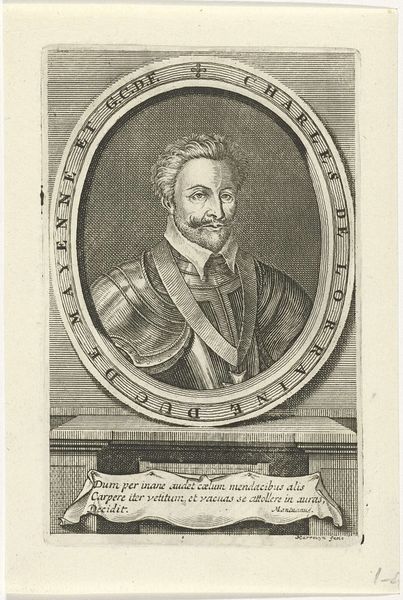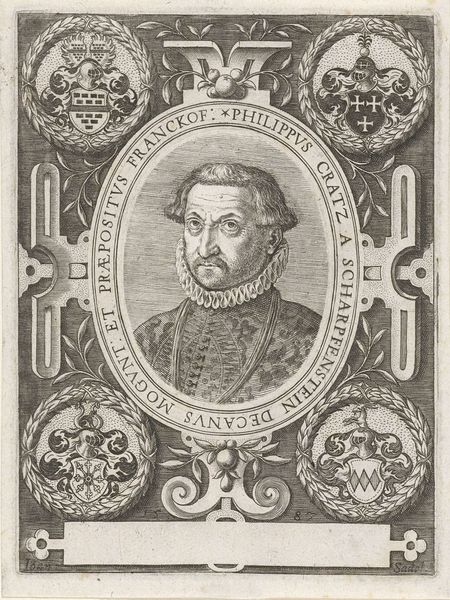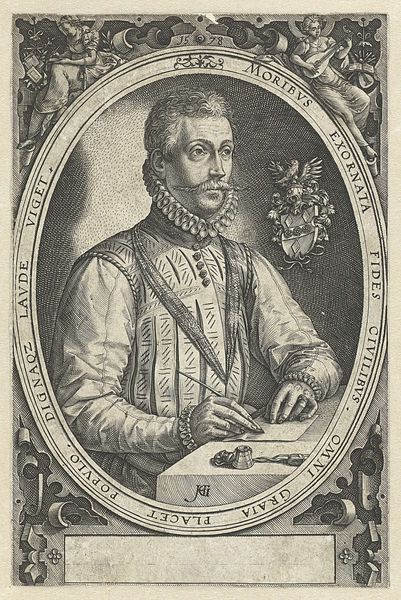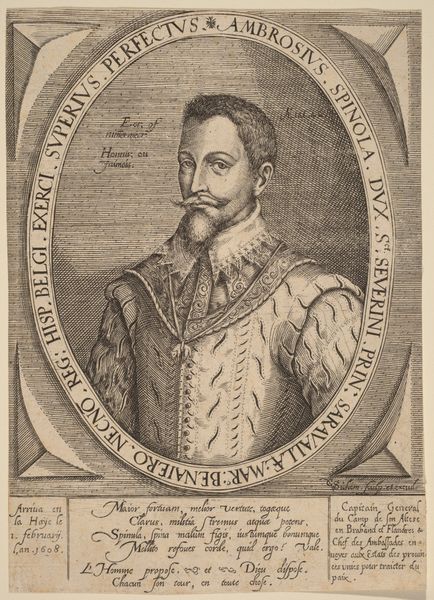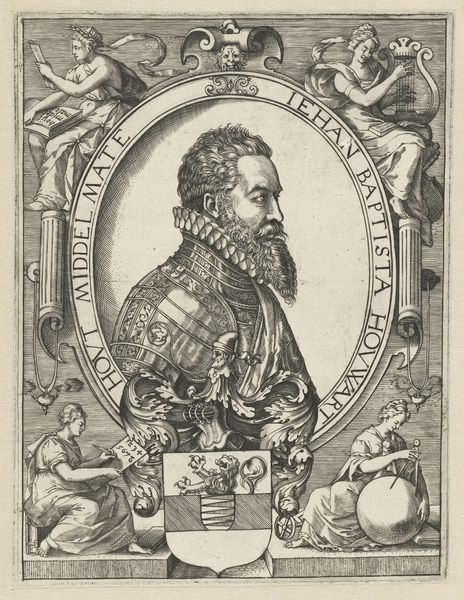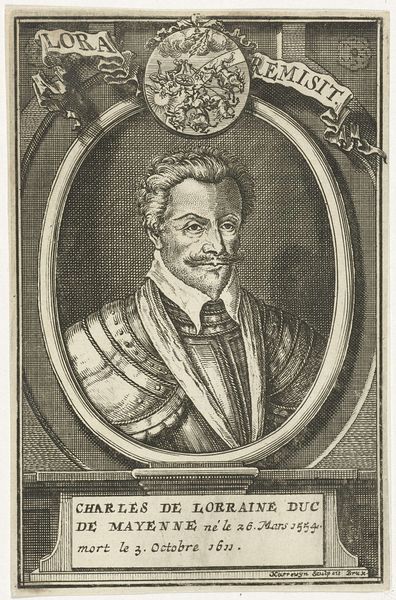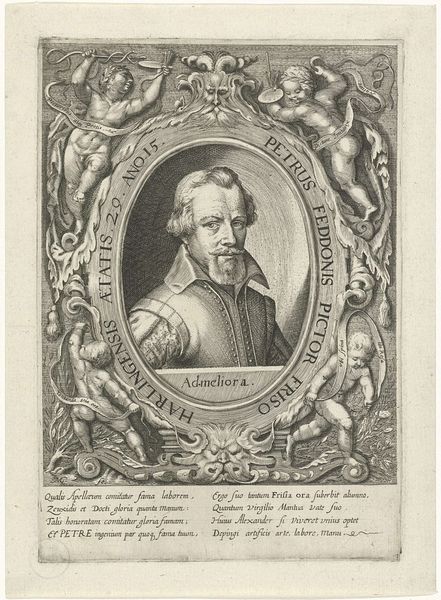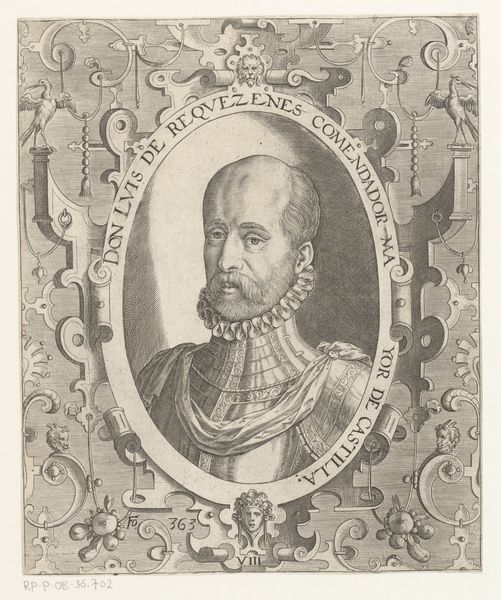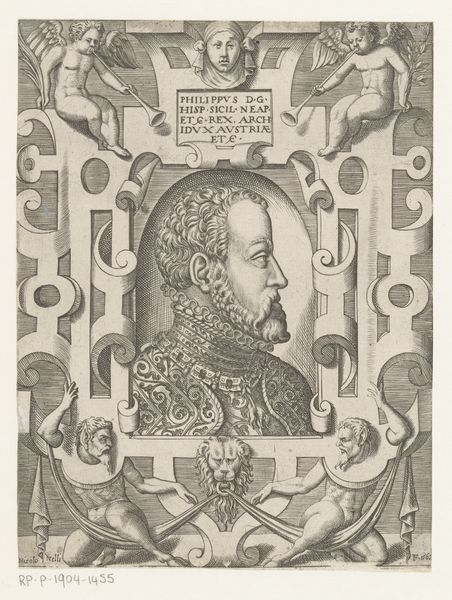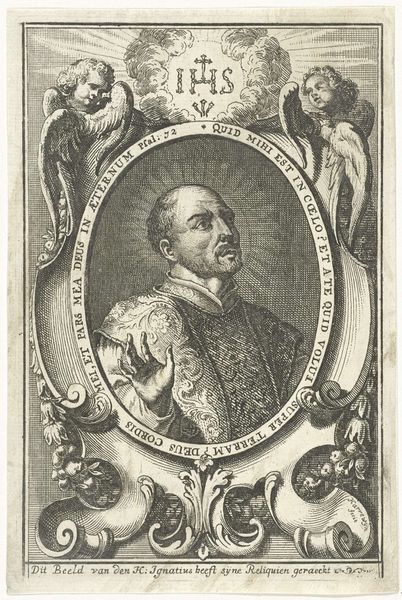
engraving
#
portrait
#
pen drawing
#
figuration
#
11_renaissance
#
line
#
northern-renaissance
#
engraving
Dimensions: height 107 mm, width 80 mm
Copyright: Rijks Museum: Open Domain
Curator: Here we have an engraving entitled "Portret van Thomas Cavendish" by Jodocus Hondius, created around 1595-1597. Editor: My first impression? A striking composition! The detail is astonishing, and the contrasting textures of his garment and the maps create a rich visual experience. Curator: Indeed. Hondius, known for his cartography, positions Cavendish, a famous English explorer, with globes depicting his circumnavigation. It's a calculated visual assertion of England's burgeoning maritime power. Editor: From a formal perspective, notice how the oval framing device is echoed in the circular globes. This reinforces the theme of global exploration and emphasizes Cavendish's connection to the world at large. Curator: And observe how the Latin inscription underscores Cavendish's noble status and accomplishments. It's a carefully crafted image designed to promote his legacy and, by extension, England's ambitions. The portrait, therefore, is not simply representational but actively participates in shaping Cavendish’s public persona. Editor: Yet, within this grand display of power, I see a more subtle, perhaps even vulnerable, quality in Cavendish's gaze. It suggests a certain introspection despite the confident pose and lavish clothing. There is such skill on the linear construction and hatching which produces remarkable tonal modeling in black and white Curator: Interesting observation! This ambiguity perhaps reflects the complex social and political context of Elizabethan England, where exploration was both a source of national pride and fraught with risk. The formal constraints of portraiture allowed for limited expressions of individuality or unease, I suppose. Editor: Precisely. It’s fascinating how Hondius balances the requirements of propaganda with subtle, almost subliminal cues of human complexity, creating an engraving with many layers of detail. The patterns work to great affect for texture. Curator: The work really epitomizes the intersection of art, power, and historical narrative in the late 16th century. Hondius delivered a multi-layered and deeply evocative artifact reflecting on Elizabethan aspirations for territorial control. Editor: Agreed. Hondius masterfully employs form to embody larger societal shifts. And the overall effect leaves you contemplating not just Cavendish himself but the very nature of exploration and representation.
Comments
No comments
Be the first to comment and join the conversation on the ultimate creative platform.

